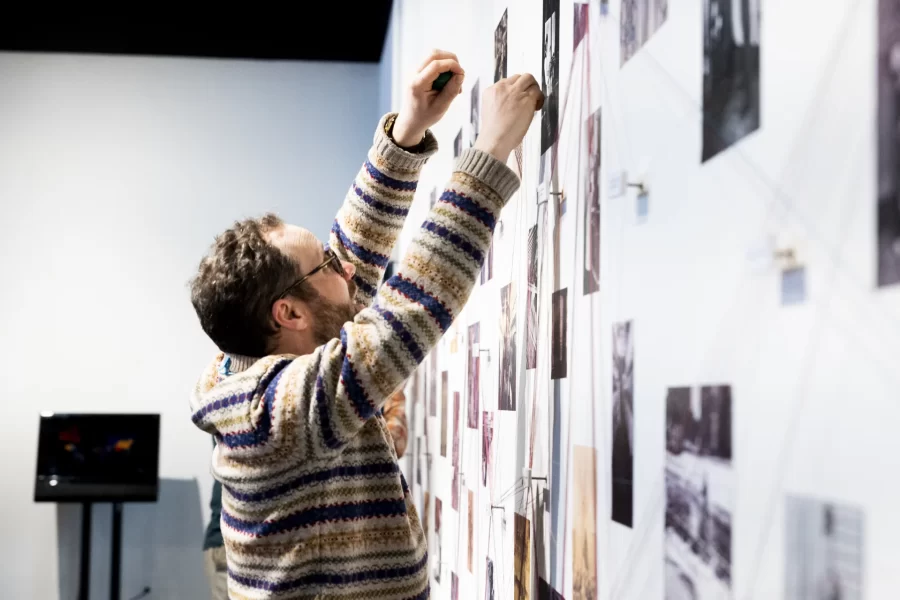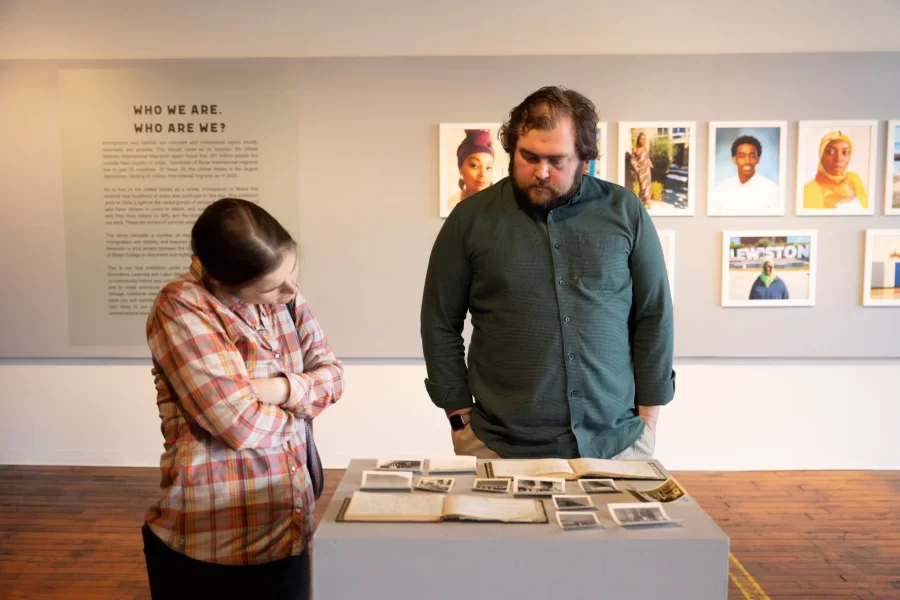MILLing About
On Friday, February 24, a dozen Bates staffers joined members of the Harward Center for lunch and a trip to the Maine Museum of Innovation, Learning, and Labor (Maine MILL) to see the new exhibit “Who We Are / Who Are We?” Coming from Administration, Advancement, Facilities, the Ladd Library, the Muskie Archives, the Museum of Art, as well as the Harward Center, some of us had worked at Bates for decades, some only for weeks, but for most it was their first visit to Maine MILL. We all left with an increased sense of community and connection to Lewiston’s past, present, and future.

The museum’s curator, Bates alumna Rachel Ferrante (B.A., ‘10), welcomed us to the Main Gallery, where the current exhibit “Who We Are / Who Are We?” explores the central role immigration has played in forming the fabric of the L/A area and Maine more broadly. Presenting information on waves of immigrants throughout history, from Ireland, Eastern Europe, Germany, Quebec, China, Somalia, and elsewhere, the exhibit highlighted the ways people from all over the world have worked to build their homes here. In addition, two maps display the words and phrases used by the indigenous peoples who lived in this region for thousands of years before the first Europeans arrived, describing the names of places and features of the greater Androscoggin River area. The exhibit culminates in an interactive experience where visitors use string to link nodes that represent different identifying characteristics, such as “I was born in another country” or “I speak more than one language,” literally forming a kind of tapestry that physically represents the various forces that connect and bind us, but that also make us unique.
Educator and Community Outreach Manager Mary Kate MacVicar then took us to view the permanent collection on the second floor. We followed her through a locked door, down a hallway, up an elevator, down another hallway, and through another locked door to finally reach the space where, for 140 years, workers created the textiles that defined the Lewiston-Auburn region and drove its economy. Despite our labyrinthine path, this area is by no means off-limits. Mary Kate was happy to show us around, and the walk itself was an education, revealing just how big the Bates Mill complex was and remains. In the permanent collection, Maine MILL displays machinery and artifacts that were salvaged – literally pulled out of dumpsters – by members of the community who recognized these objects as part of their history. While the focus began with textiles, the collection has expanded to include objects from the shoe and brick industries, and consists of things both preserved from the trash bin and donated by folks who worked there. In fact, one member of our group, Mark Truitt from Facilities Services, shared with us that his grandmother had actually worked in the mill, and wondered what she would have had to say about all these machines and materials that had found a new life as part of the museum’s collection.

The visit to Maine MILL was a great way for members of the Bates community to connect both with each other and to get a greater sense of the deep and rich history that surrounds and suffuses the Lewiston-Auburn area and that is being preserved, celebrated, and analyzed by a group of dedicated, warm, and brilliant professionals with indelible ties both to Bates and to Lewiston.